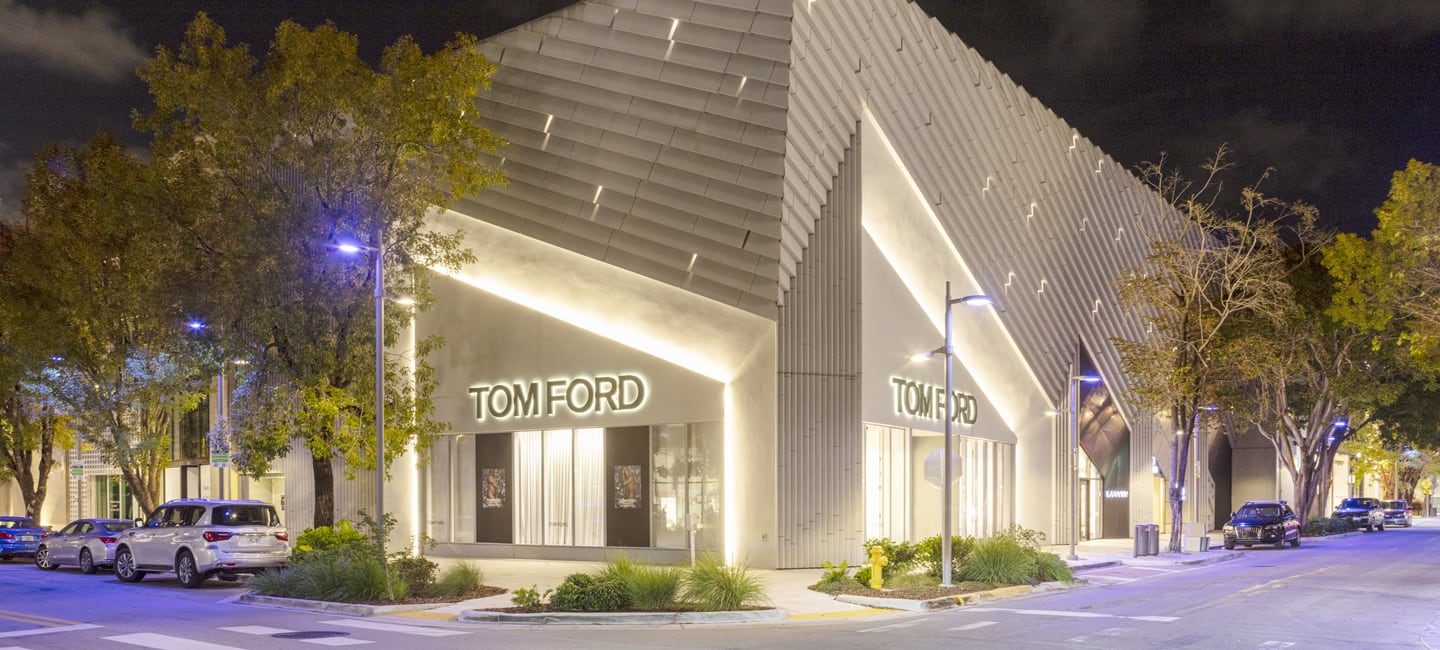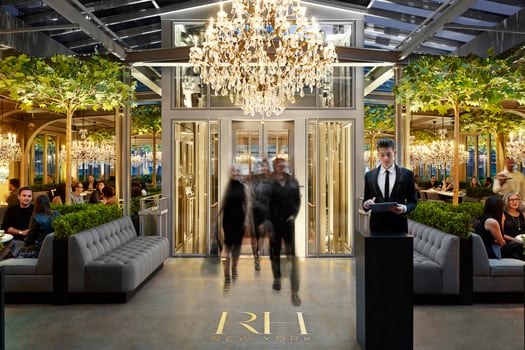Enter the New Era of Retail Theater
June 5, 2023

The role of brick-and-mortar has been reimagined as a transformational experience.
At DICK’S House of Sport in Ridgedale Center, guests play hockey, rock climb, practice their golf swings, take private batting lessons, and even attend summer camp. At RH in Oakbrook Center, patrons enjoy lunch in a glass-encased rooftop restaurant decked out in RH decor and then shop for home furnishings in one seamless, multisensory experience. And at Miami Design District, visitors immerse themselves into a creative cosmos where world-class fashion, food, design, art, and architecture come together in a futuristic fantasy.
Welcome to the new era of retail theater, where the store is the stage and shoppers are invited to be part of the play. After years of pandemic-fueled online shopping, the role of brick-and-mortar has been radically reimagined. No longer merely transactional, physical retail has evolved into a transformative, brand-building opportunity. And retailers who are heeding the call for unique, real-life experiences are seeing unprecedented growth.
“Excite the mind, and the hand will reach for the pocket.”
—Harry Selfridge, Selfridges founder
With record-setting full year 2022 net sales of $12.37 billion — up 0.6 percent from 2021 and up 41.3 percent from 2019 — DICK’S Sporting Goods is not only winning the experiential game, it’s doubling down on it. “We are leaning into that growth,” DICK’S Sporting Goods CEO Lauren Hobart recently told Retail Dive. “We’re very, very bullish on House of Sport and what this can do for our athlete experience in our business.” Over the next five years, the retailer plans to add another 75 to 100 House of Sport locations across the country. DICK’S House of Sport is also responsible for driving growth at Ridgedale Center. Since its opening in June 2022, the Minnetonka-based shopping center has performed better than it has in its nearly 50-year history, with traffic at the mall up by at least 20 percent, and sales trending eight percent higher year over year, according to Ridgedale Center senior general manager Joan Schlegel Suko.

While leveraging experiences rather than products might seem counterintuitive, allowing customers to “experience” a brand leads to a stronger connection with both the brand and its products. Highly curated in-store experiences encourage consumers to spend more time at a store — and eventually more money, both spontaneously and over time.
“When we talk about experiential retail, what we talk about often is something that’s customer centric, something that’s digitally enabled, something that’s multisensory,” said The Business of Fashion North America managing director Rahul Malik at our recent NEXT retail summit. “But really what I think we’re talking about is something that is emotional. My call to action, as you think about the different initiatives that you’re prioritizing — is are they helping you to deliver and create an emotional experience for the people you want to be targeting and reaching?”

Although experiential retail has recently risen to new heights, it’s hardly a new idea. When Harry Selfridge opened his London store in 1909, he brought along a window dressing expert from Marshall Field’s in Chicago to create over-the-top window displays. From hosting live music performances to opening an in-store cafe to exhibiting the first plane to cross the Channel, this retail icon understood the power of creating memorable experiences. “Excite the mind, and the hand will reach for the pocket,” he was known to say.
Selfridges was the predecessor to the modern flagship store, a concept that has been redefining the luxury retail experience, one palatial masterpiece at a time. Last year, Dior introduced its newly transformed flagship at 30 Avenue Montaigne in Paris, along with an adjacent fashion museum that together make up a magical Dior universe. And this year, Tiffany & Co. debuted its new Fifth Avenue flagship, featuring museum-quality art, an homage to Audrey Hepburn, and a mirrored staircase inspired by jewelry designer Elsa Peretti. Although the remodel cost an estimated $250 million, the Fifth Avenue flagship reportedly accounts for 10 percent of the brand’s global revenue.

At Miami Design District, luxury flagship stores are designed to look like pieces of art, each reflecting their brand’s own unique aesthetic — from Balenciaga’s “raw architecture” concept to Louis Vuitton’s statement-making all-white men’s store to Tom Ford’s stunning angular profile with its art deco-inspired facade. “Luxury brands and leading fashion houses see the Miami Design District as a hub in the U.S. where they can make a statement,” Miami Design District developer Craig Robins told Grazia magazine.
As physical retail continues to evolve and expand, so too will opportunities for brands to engage customers through opulent flagship stores and immersive experiences that literally bring their brands to life. “We wanted to have the ultimate physical experience,” said Dior CEO Pietro Beccari in a statement about the 30 Avenue Montaigne project. “I call it the ‘anti-metaverse’ because finally, you are in the Dior universe, you are living a dream, and you can really touch and feel everything . . . it’s a living representation and symbolization of our DNA.”
Interested in working together? Connect with us!